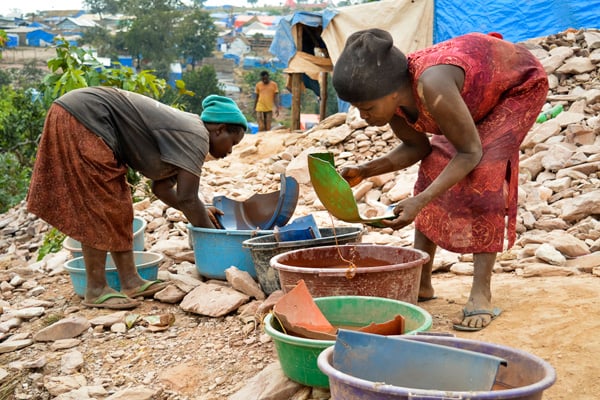Prime
Great Lakes member states agree to support women and children in mining sector

Potential: The mining sub-sector has the potential to generate at Shs70.2b annually. FILE PHOTO
The Great Lakes Region is endowed with a wealth of high-value mineral resources, most of which are in high demand on the global market. However, due to the largely informal and often illegal nature of mineral exploitation and trade, the region's countries and communities have received very limited benefits thus far. Women and youth continue to be the most marginalised groups, with little involvement in the management and benefits thereof of the Great Lakes mining sector.
Furthermore, the revenues generated by mineral exploitation and trade enable armed groups in Eastern Democratic Republic Congo (DRC) to finance their operations, obtain weapons, recruit fighters, including youth, and continue to wreak havoc in the region, including sexual and gender-based violence used as war weapons.
Ms Libereta Mulamula, the first secretary of the Secretariat of the International Conference of the Great Lakes Region (ICGLR) says 13 years ago, the heads of state of countries in the region met in Lusaka to address the problem of illegal exportation of natural resources in the region as a source of conflict, more so in DRC.
“They had a unanimous decision to put an end to the practice by adopting various mechanisms such as certification of our minerals to establish their source. However, most important was to promote the women, and youth of the region to take our minerals as a common heritage and a source of wealth rather than conflict,” she said
This initiative was complemented in 2012 by the ICGLR Guidelines for Gender Mainstreaming in the Mining Sector, which were revised and approved by member states in Kinshasa in April 2022.
It was to this effect a conference focusing on the protection of women and youth human rights in the mining sector was held last week in Kampala, Uganda, bringing together all the member states.
Under the theme: Strengthening women and youth ownership of the regional initiative against illegal exploitation of natural resources, Ms Mulamula says one of the focuses was to interrogate how best to strengthen women and youth participation in this sector.
“We will look at how best women in the sector can translate their efforts into improving their livelihoods while also contributing to ending the conflict,” she says.
Ms Ruth Nankabirwa, the minister of energy and mineral development says the conference was to create laws that recognise artisanal miners where most women and youth are involved.
“There is also a need for value addition in the mining sector as our law bans the exportation of unprocessed minerals. That will pull factories to the region while creating jobs for women and youth,” she says.
Ms Nankabirwa who was also the chief convenor said the participants are tasked with interrogating what governments should do to improve the livelihoods of the youth and women in mining.
“They should come out with actionable recommendations that will see women and youth better participate in the sector. These could include the need to access affordable financing, and increasing the mandatory women participation threshold on every project,” she says.
Ms Nankabirwa also made a plea to the UN peacekeepers in the DRC to create lasting peace in the region saying they are taking too long.
Mr Johny Yohanis, the resource development expert at African Union (AU) says it is sad that Africa is not harnessing the potential of minerals towards development and peaceful cohesion.
“Nonetheless, we continue to push for the continental policy, particularly the Africa mining vision which talks of good governance, linkages and diversification because mineral resources lead to industrialisation. The continent has the potential but we need to prioritise that,” he says.
Mr Yohanis says the AU is also working to increase the number of women and youth even beyond artisanal mining through capacity building, and giving them the right technology for value addition and processing.
“The continent is at the best place with the ongoing energy transition where the world is looking for energy materials such as lithium, cobalt which Africa, particularly the great lakes region has in abundance,” he says.
He, however, adds that the AU relies on its member states and the regional economic communities to push regional activities.




